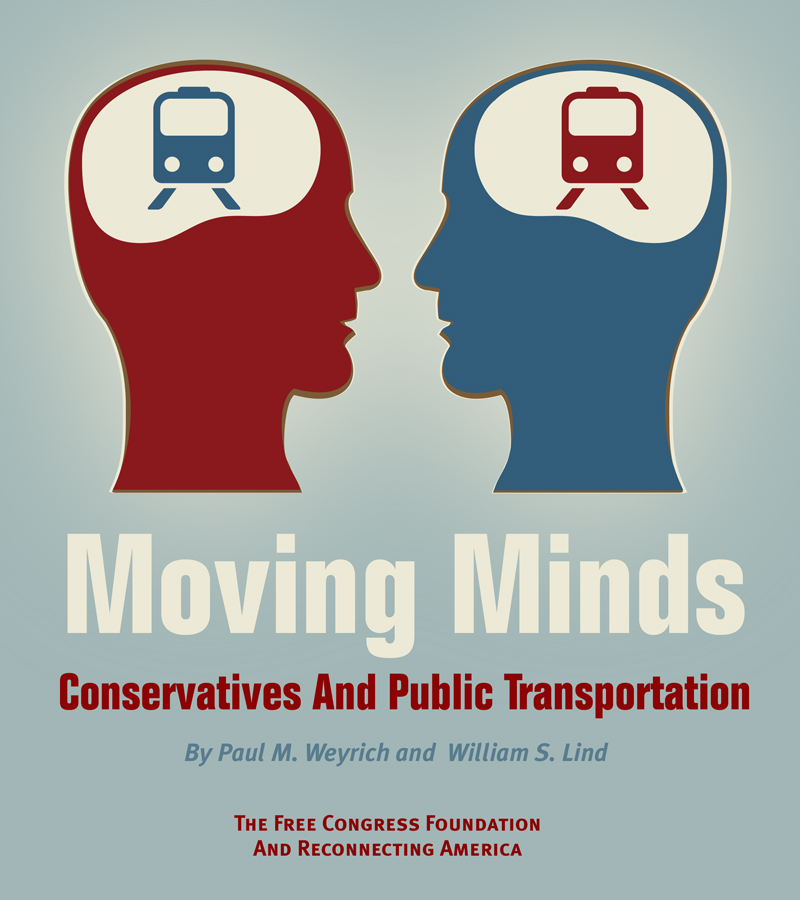Conservatives and public transportation — join us on Monday the 14th
 |
| Sign up to listen to the free online debate next Monday, 12/14 |
UPDATED: This session has been rescheduled for 12/14. If you already signed up with the link below, you won’t need to do a thing, and should get an email from us.
“As conservatives, our first principle is the reality principle,” wrote William Lind and the late Paul Weyrich in Moving Minds: Conservatives and Public Transportation. “Public policy must be based on reality, not on the fairy-tale wishes so beloved by liberals.”
Left-leaning transit advocates need not be insulted.
The authors are simply trying to talk about public transportation in ways that appeal to right-of-center allies. If your interest is piqued, you’ll definitely want to join us for an online debate next Monday, December 7, December 14th in which a handful of experts, including co-author Lind, will discuss — and debate — the ideas contained in the book. Register for the debate here.
Reality-based planning can find appeal across political persuasions because everybody relies on America’s transportation system in one form or another. Even people who don’t use public transportation on a regular basis receive numerous benefits from its expansion, the authors point out. The reason? More rail passengers means less traffic congestion and faster commute times, a win-win.
In Salt Lake County, Utah, for instance, supporters of a referendum on light rail developed a campaign aimed at non-transit riders with the simple message: “even if you don’t ride it, you use it.” One ad focused on an automobile wheel moving along faster because of less crowded roads, while another emphasized the advantages of less traffic congestion, the authors noted.
They offer three concrete reasons in the book for why transit is good for non-riders. The first is the reduction in road gridlock. The second is “the big football game” or the car being in the shop or some other circumstance that creates the need for an alternative. The third reason is that lower congestion and better transit access actually raises property values and improves quality of life.
The authors make several peripheral points as well, such as the influence of heavy subsidies and market distortions on the prevalence of auto-oriented, low-density growth — a concept getting some notoriety in the last week.
“Every urban and suburban area should offer two alternate building codes, one the current ‘sprawl’ code and the other a code that allows traditional neighborhood design, where living, working and shopping are all close by each other,” the authors argue. “Which code will prevail? Let the market decide!”
Weyrich and Lind also reject the oft-prevailing wisdom that the “obvious” solution to traffic congestion is building more roads or lanes. When more lanes are made available, people who would not have driven otherwise make additional trips, inducing demand and resulting in yet more gridlock — the exact problem that the lanes were supposed to solve.
There is no unanimity about public transport among conservatives. One right-leaning mass transit critic is Sam Staley, director of urban and land use policy at the Reason Foundation. He will appear alongside Lind in Monday’s debate, along with John Robert Smith, president and CEO of Reconnecting America and former mayor of Meridian, Mississippi; and Bill Millar, president of the American Public Transportation Association (APTA).
We hope you’ll join us too. Register today.



















